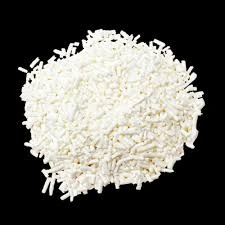
Exploring the Role of Polar Aprotic Solvents in Enhancing SN2 Reaction Mechanisms
Polar Aprotics Solvents and Their Role in SN2 Reactions
In the realm of organic chemistry, the choice of solvent plays a pivotal role in determining the success and efficiency of chemical reactions. Among various types of solvents, polar aprotic solvents have emerged as crucial players, particularly in nucleophilic substitution reactions, specifically the bimolecular nucleophilic substitution (SN2) mechanism. This article aims to explore the characteristics of polar aprotic solvents and their significance in facilitating SN2 reactions.
Understanding Polar Aprotic Solvents
Polar aprotic solvents are characterized by their ability to dissolve a wide range of ionic and polar compounds while lacking acidic protons that can participate in hydrogen bonding. Common examples of polar aprotic solvents include dimethyl sulfoxide (DMSO), acetone, acetonitrile, and dimethylformamide (DMF). These solvents possess a dipole moment due to their polar nature, which allows them to stabilize ions and polar molecules without engaging in strong hydrogen bonds.
Mechanism of SN2 Reactions
In SN2 reactions, a nucleophile attacks an electrophilic carbon center, leading to the substitution of a leaving group. The reaction is characterized by a single concerted step, where the nucleophile approaches the carbon atom, displacing the leaving group. This process is influenced by several factors, including the nature of the nucleophile, substrate, and solvent.
Role of Polar Aprotic Solvents in SN2 Reactions
polar aprotic solvents sn2

The use of polar aprotic solvents in SN2 reactions is particularly advantageous due to their unique properties. One of the primary benefits of these solvents is their ability to solvate cations without excessively solvate anions. This leads to the effective stabilization of the nucleophile, allowing it to remain reactive and unhindered during the substitution process.
For instance, in polar aprotic solvents, the nucleophile is typically more free compared to in polar protic solvents, where excessive hydration of the nucleophile may occur, hindering its ability to approach the electrophilic center. The lack of strong hydrogen bonding in polar aprotic solvents allows nucleophiles to retain their nucleophilicity, making reactions proceed at a faster rate.
Examples and Applications
Consider a reaction involving sodium iodide (NaI) and 1-bromohexane in dimethyl sulfoxide (DMSO). The DMSO solvent effectively solvates the Na+ ion, thereby increasing the availability of the I- nucleophile. Consequently, the SN2 reaction proceeds quickly, yielding hexyl iodide as a product. In contrast, a polar protic solvent like water would solvate I- too strongly, decreasing its nucleophilicity and slowing the reaction.
Another noteworthy application is in the synthesis of various organic compounds, such as pharmaceuticals and agrochemicals, where SN2 mechanisms are frequently employed. The choice of polar aprotic solvents has been shown to enhance yields and reduce reaction times, making them essential in industrial and laboratory settings.
Conclusion
In conclusion, polar aprotic solvents play an indispensable role in facilitating SN2 reactions through their unique ability to enhance nucleophilicity while preventing excessive solvation. Their properties allow for efficient substitution reactions, leading to high yields and faster reaction times. Understanding the dynamics of polar aprotic solvents not only informs chemists about optimal reaction conditions but also aids in the design and synthesis of a plethora of organic compounds. As research in organic chemistry continues to advance, the significance of solvent choice, particularly polar aprotic solvents, remains a focal point for achieving successful and efficient chemical transformations.
-
Why Glacial Acetic Acid Food Grade Is Essential in FlavorNewsMay.26,2025
-
Surging Export Growth of Food Additives in ChinaNewsMay.26,2025
-
How Ammonium Nitrate Fertilizer Boosts Crop YieldsNewsMay.26,2025
-
How 1,2,3-Benzotriazole Shields Plastics from UV DegradationNewsMay.26,2025
-
Cyanide in Gold Mining: Protecting People and the PlanetNewsMay.26,2025
-
Aluminum Hydroxide in Modern Sunscreen FormulationsNewsMay.26,2025
-
Understanding Synthetic Rubber OptionsNewsApr.27,2025
Hebei Tenger Chemical Technology Co., Ltd. focuses on the chemical industry and is committed to the export service of chemical raw materials.
-

view more DiethanolisopropanolamineIn the ever-growing field of chemical solutions, diethanolisopropanolamine (DEIPA) stands out as a versatile and important compound. Due to its unique chemical structure and properties, DEIPA is of interest to various industries including construction, personal care, and agriculture. -

view more TriisopropanolamineTriisopropanolamine (TIPA) alkanol amine substance, is a kind of alcohol amine compound with amino and alcohol hydroxyl, and because of its molecules contains both amino and hydroxyl. -

view more Tetramethyl Thiuram DisulfideTetramethyl thiuram disulfide, also known as TMTD, is a white to light-yellow powder with a distinct sulfur-like odor. It is soluble in organic solvents such as benzene, acetone, and ethyl acetate, making it highly versatile for use in different formulations. TMTD is known for its excellent vulcanization acceleration properties, which makes it a key ingredient in the production of rubber products. Additionally, it acts as an effective fungicide and bactericide, making it valuable in agricultural applications. Its high purity and stability ensure consistent performance, making it a preferred choice for manufacturers across various industries.











